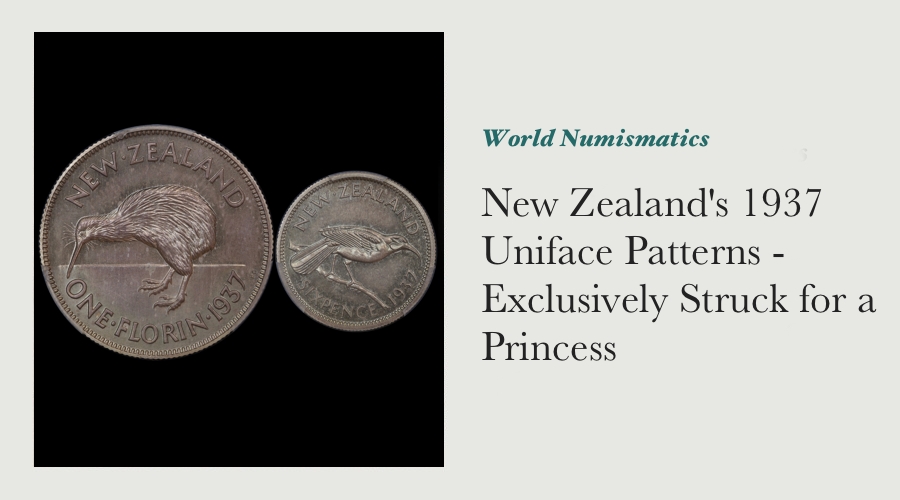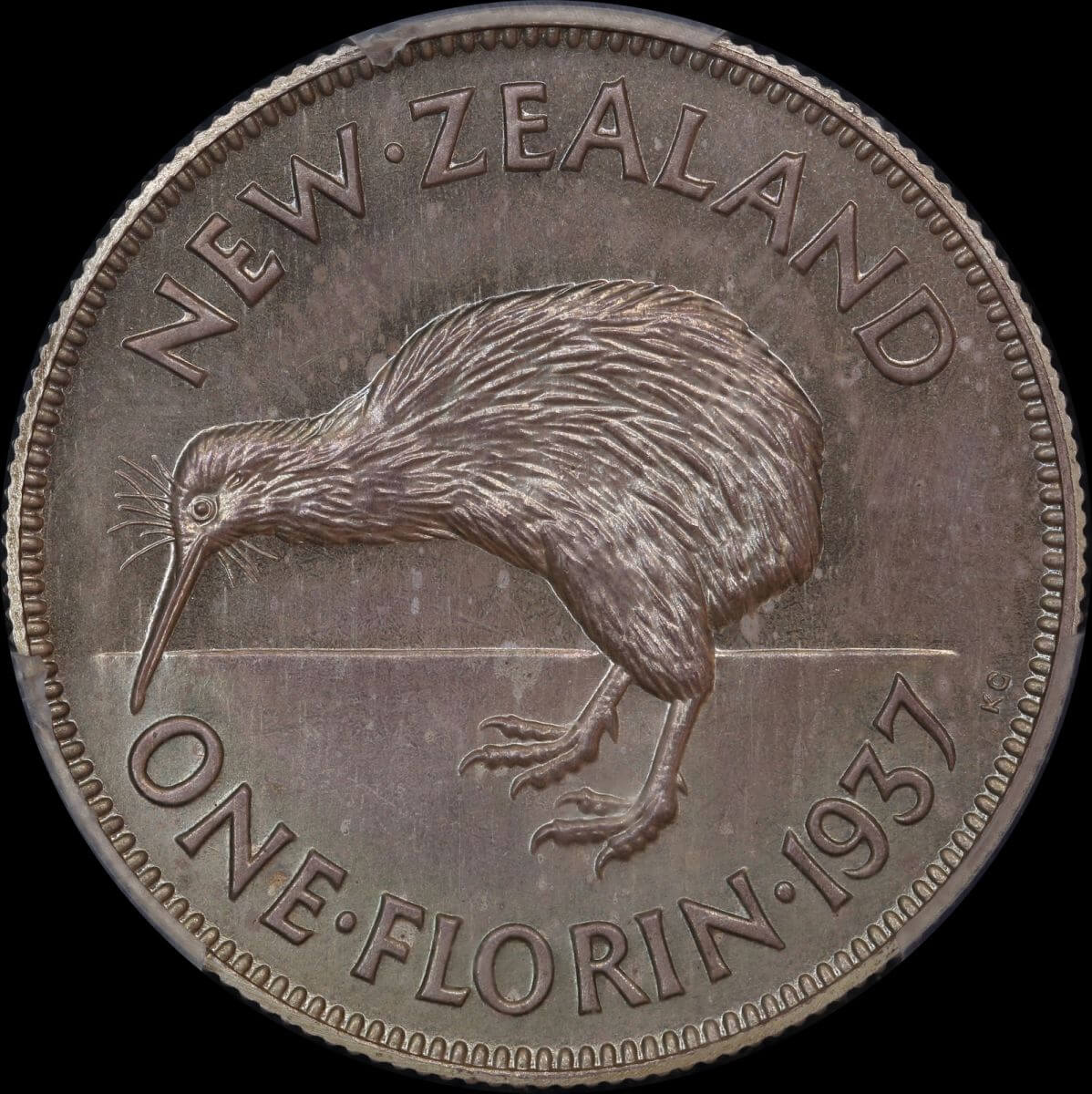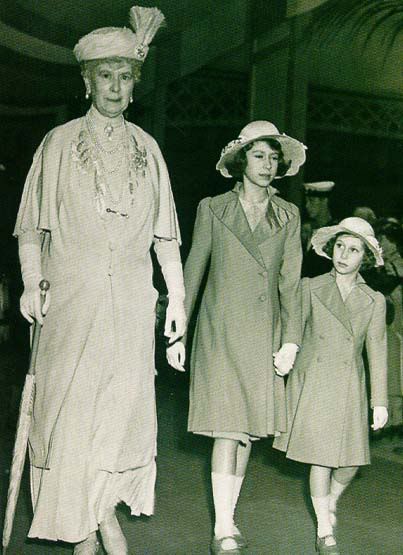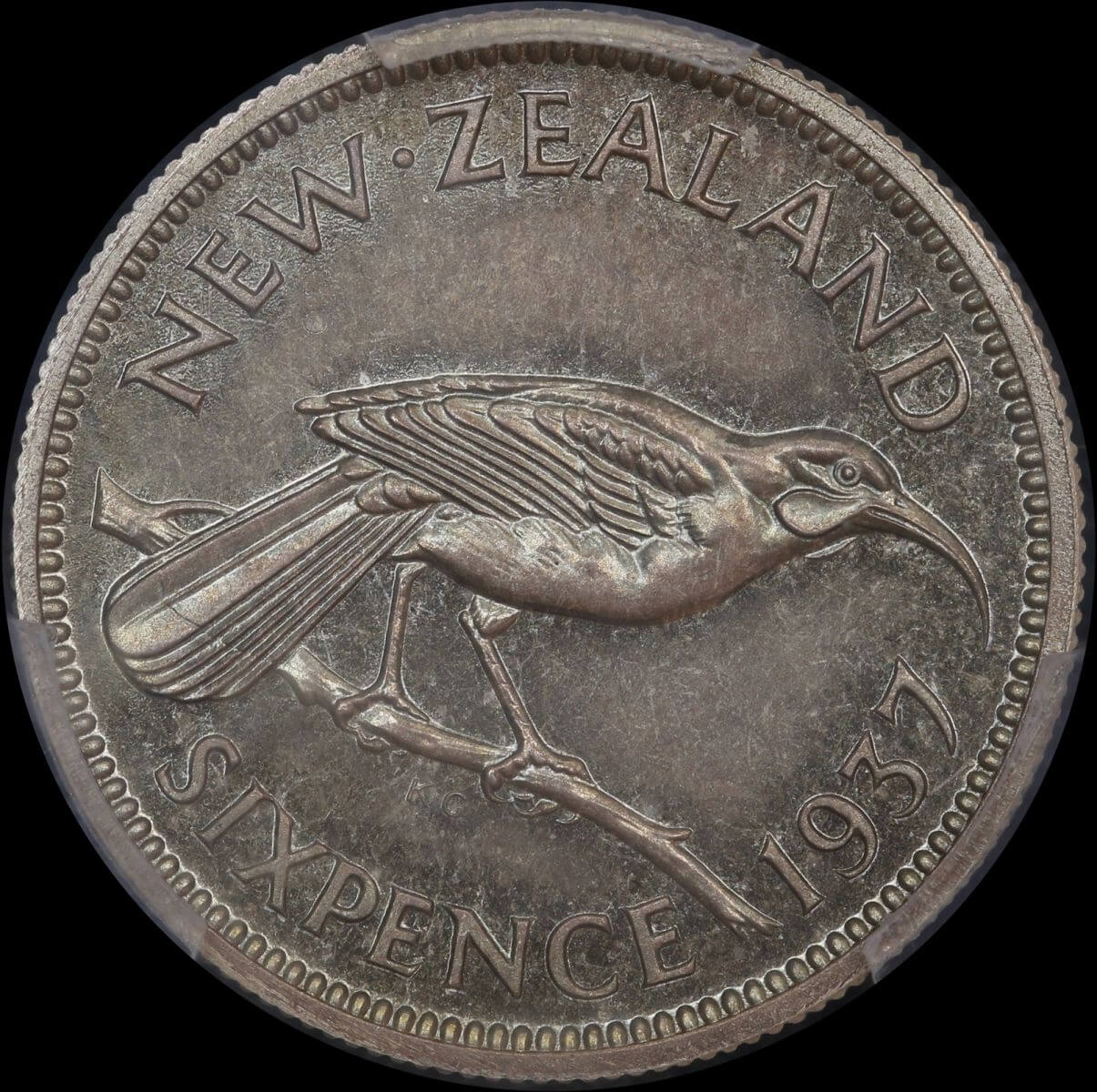The 1937 Uniface Sterling Silver Patterns - Coins Struck for a Princess

The 1937 New Zealand uniface pattern florin and sixpence were exclusively struck for members of the Royal family during a visit to the London Mint in December 1937. In fact, they form part of a set of 18 different British Commonwealth coins struck on that occasion.
Importantly, they are also the only New Zealand silver pre-decimal coins struck in Sterling silver (92.50% pure), a fact that truly sets them apart.
Only five sets were struck - three are held by the Royal Collection Trust; a set that was held by the Royal Mint Museum has gone missing (and is presumed lost), leaving just one example of each coin legally available to collectors.
For these reasons, the 1937 New Zealand uniface pattern florin and sixpence can be considered among New Zealand’s rarest coins, each has a unique and exclusive origin.
Princesses Visit the Royal Mint
 On 13 December 1937, the Royal Mint was visited by Queen Mary (the wife of King George V) and her two eldest granddaughters: 11-year-old Princess Elizabeth (the future Queen Elizabeth II), and her 7-year-old sister, Princess Margaret Rose.
On 13 December 1937, the Royal Mint was visited by Queen Mary (the wife of King George V) and her two eldest granddaughters: 11-year-old Princess Elizabeth (the future Queen Elizabeth II), and her 7-year-old sister, Princess Margaret Rose.
The Queen and the Princesses toured the Royal Mint as part of an educational programme, Royal Mint officials went to great lengths to make the factory tour interesting and informative for the young Princesses.
The Deputy Master of the Royal Mint, Sir Robert Johnson, accompanied the royal party around the Mint on their tour - he also received a set of 18 coins, while a fifth set was placed in the Royal Mint Museum.
The royal visitors watched the Mint machinery in action, and at the end of the tour, Queen Mary, Princess Elizabeth and Princess Margaret Rose were each presented with cased sets of the coins they had seen being made.
The coins had been carefully selected - they each featured different animals from widespread parts of the Commonwealth, which Mint staff hoped would particularly appeal to the young royals.
Not only were the designs exotic, but the coins were also exclusive for several other reasons - they were struck on the reverse side only, and regardless of the metal they were normally released in, each was struck in the purest alloy available, 92.50% pure silver.[1]
The full list of the 18 coins struck is as follows:
|
Country |
Denomination |
Date |
KM Ref # |
Animal |
|
Australia |
Shilling |
1937 |
39 |
Merino Ram |
|
Australia |
Penny |
1937 |
36 |
Kangaroo |
|
East Africa |
Shilling |
1937 |
28.1 |
Lion |
|
Eire |
Half Crown |
Undated |
8 |
Horse |
|
Eire |
Two Shillings |
Undated |
7 |
Salmon |
|
Eire |
Shilling |
Undated |
6 |
Bull |
|
Eire |
Sixpence |
Undated |
5 |
Irish wolfhound |
|
Eire |
Threepence |
Undated |
4 |
Blue hare sejant |
|
Eire |
Penny |
Undated |
3 |
Hen with chicks |
|
Eire |
Halfpenny |
Undated |
2 |
Sow with piglets |
|
Eire |
Farthing |
Undated |
1 |
European woodcock |
|
Fiji |
Sixpence |
1937 |
8 |
Turtle |
|
Great Britain |
Farthing |
1937 |
843 |
Wren |
|
Mauritius |
Half Rupee |
1934 |
16 |
Stag |
|
New Zealand |
Florin |
1937 |
10.1 |
Kiwi bird |
|
New Zealand |
Sixpence |
1937 |
8 |
Huia bird |
|
South Africa |
Farthing |
1923 |
23 |
Two birds |
|
Southern Rhodesia |
Two Shillings |
1937 |
4 |
Sable antelope |
Sir Robert Johnson’s Set - Acquired in 1938 by Fred Baldwin
Sir Robert Johnson’s obituary states that he passed away on March 2nd, 1938, just 3 short months after his tour with members of the Royal family. 
The presentation set he received was bought from his estate by the London-based rare coin dealer Fred Baldwin,[2] who retained the set in his personal collection until his own death in January 1970.[3]
Baldwin’s collection contained many important Australasian numismatic items, a number of them were consigned to Australian numismatic auctions from the late 1970s and throughout the 1980s.
The 1937 uniface florin was first offered for public sale in November 1986, while the 1937 uniface pattern sixpence was first offered in March 1988. Other coins from Johnson’s presentation set were offered around the same time - the 1937 uniface pattern sixpence from Fiji was offered in July 1992, while the 1937 Uniface Pattern Half Rupee dated 1934 was also offered for sale in 1992.
A book was recently published on the coins and medals held by the British Royal Collection Trust - “Monarchy, Money and Medals”. Authored by Jeremy Cheek, it definitively articulates the rarity and background of these truly exclusive and historic coins.
For the first time, collectors may now have confidence in the unique standing these coins have in world numismatics.
Bibliography:
1. Cheek; Jeremy, "Monarchy, Money and Medals", Spink Publications, London, 2019, p98.
2. Cheek, op cit, p100.
3. Carson; RAG, "Mints, Dies and Essays, in Memory of Albert Baldwin", Methuen, London, 1971, p6.